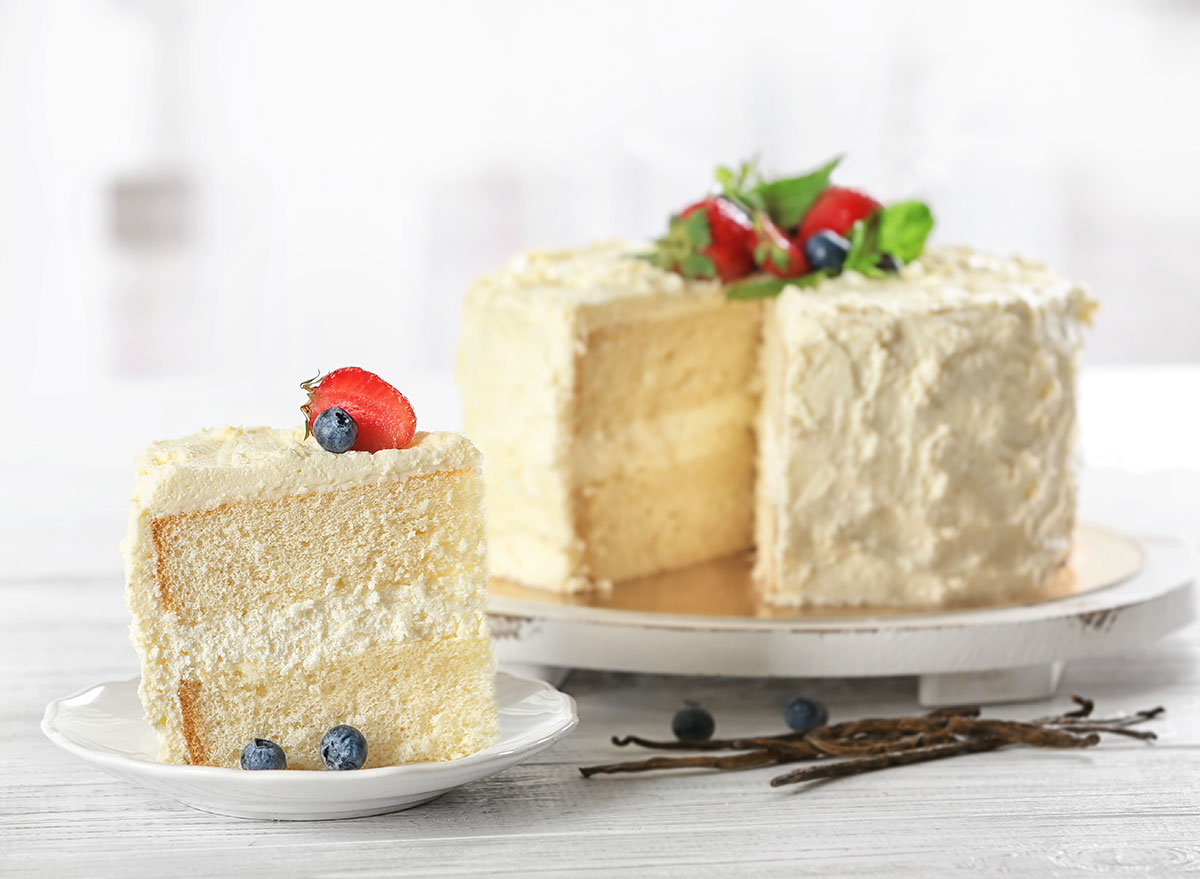What's the Real Difference Between White, Yellow, and Vanilla Cake?

All cakes start with the same base ingredients: flour, sugar, a leavening agent, a fat, and eggs. However, that doesn't mean all cakes are created equal. How you alter or add to those basics determines what kind of cake you end up with. Take white, vanilla, and yellow cakes, for example. They're seemingly very, very similar, right? Well, not exactly. We asked Las Vegas-based pastry chef Shea Wafford, who works at Mandalay Bay's Ri Ra restaurant, to break down the differences among these three commonly confused cakes.
What are the major differences between white, yellow, and vanilla cake?
What separates these cakes is the type of eggs, fat, and the amount of vanilla they call for. Some require egg whites, while others use whole eggs. Some need butter, while others demand oil. Now, without further ado, let's break these baked goods down!
So, what's in a white cake?

White cake starts with the typical base cake ingredients, but only the egg whites are used in this recipe. For the fat, Shea says oil is commonly used, rather than butter, to keep the cake as white as possible.
"White cake is going to be the lightest and most airy," Shea notes. "The airiness of the cake can be contributed to the egg whites, but also the mixing method. By whipping your egg whites and then folding them into the batter, you will achieve a lightness in your cake."
How does yellow cake differ?

Yellow cake uses butter as the fat and calls for whole eggs. The combination of the two creates the batter's signature yellow color, while maintaining a neutral flavor. Also, because of the butter and the egg yolks, yellow cake tastes richer than white cake.
What about vanilla cake?

The third in this trio of comparable confections has an obvious difference. Sure, white and yellow cakes include vanilla, but it's only a small component of those recipes. Vanilla cake, on the other hand, allows that classic flavor to be the star of the show.
According to Shea, vanilla cake can be made with whatever combination of eggs and fat the baker prefers, as long as you're heavy on the vanilla so you can really taste it.
When should I use these different cakes?
If you prefer a fruit filling and a buttercream frosting (like you might see on a wedding cake), Shea suggests a neutral white cake or a vanilla cake.
Chocolate lovers, however, should go with yellow cake, according to Shea. She rarely deviates from the traditional combination of yellow cake with a chocolate frosting or a chocolate ganache.
Not much of a frosting fan? Vanilla cake also works well for a naked cake, where you want the sponge to shine instead of the glaze.
And if you're a java junkie, Shea suggests brushing your white cake with a coffee liqueur. The sponginess of the airy cake will soak that right up. After that, she says you can top it with a chocolate mousse. Trust us, your sweet tooth is about to be very happy!








